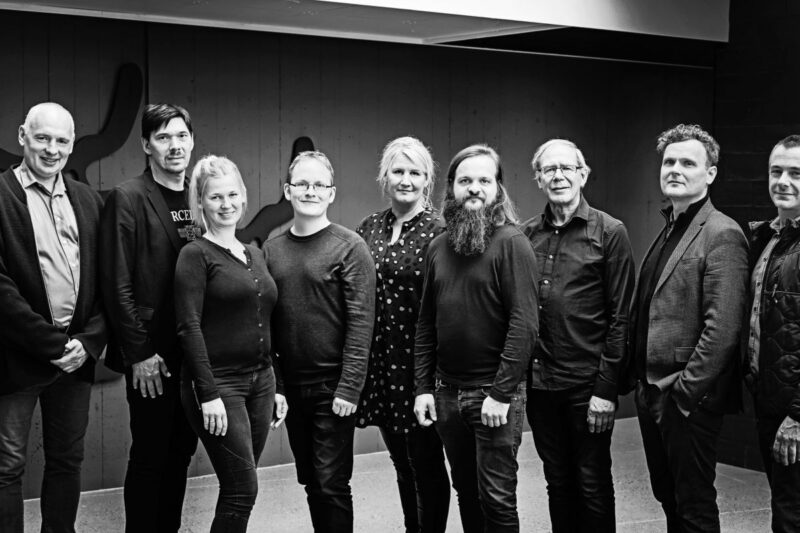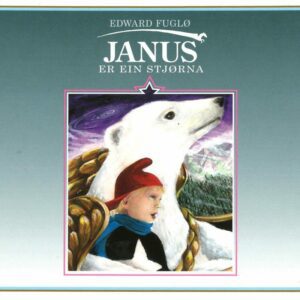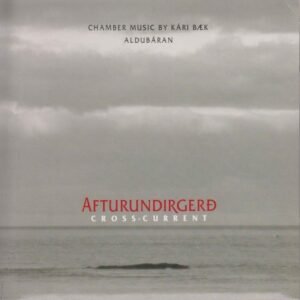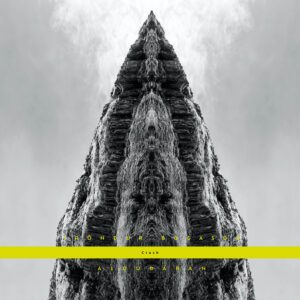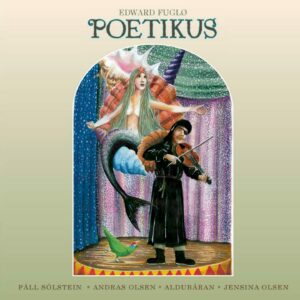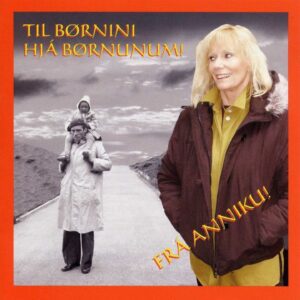Lýsing
About Impressions
“This recording comes from the long association that Aldubáran has with myself, starting from my first visit to the Faroe Islands in 1998. All the pieces on the recording were premiered by Aldubáran, with the two large ensembles being direct commissions from the group. The first commission from Aldubáran, Concertino for ten players (1999), was premiered in 2002 with conductor Thomas Søndergaard, and recorded for TUTL in 2003. For the newly commissioned Sinfonietta (2013), I was brought in to play my own timpani/ percussion part for the premiere performances and for this recording. This is the second occasion that I have performed with Aldubáran; in my first appearances with the group in 1998, I did two chamber works with myself on marimba. I am indeed grateful and proud of my involvement with Aldubáran; much of my presence in Europe has come directly because of the group.” – Hsueh-Yung Shen
Aldubáran was founded in 1995, and has continually forged new paths by putting contemporary music on the map in the Faroe Islands. The first chamber group of its kind in the Faroes, and founded by the nation’s first generation of professional musicians, has spearheaded the development of new Faroese music. The musicians have, individually and collectively, grown up alongside the music festival Summartónar, which – over the last 30 years – has been the most important event for commissioning contemporary music, as well as providing a platform for its performance. There are now 16 permanent members of Aldubáran, and they play in different configurations, from duo to full sinfonietta. The group is constantly developing with the addition of new players. The group has a repertoire from Bach to Boulez, and has a varied programme: workshops for new composers, school concerts, recordings, and crossover projects with the leading pop and folk artists in the faroes. Aldubáran is at the core of the annual Summartónar festival, always performing new Faroese – as well as international – scores. It was during their involvement at Summartónar that they met and played with Hsueh-Yung Shen for the first time. Aldubáran means “little wave”. The wave is still causing a ripple effect, continuing its ceaseless exploration across a wide-ranging musical landscape.
1. Serenade for a New Dawn, for eight winds and piano (2008)
This work was commissioned by Aldubáran for its concert tour in Switzerland in 2009, and it was premiered in Winterthur and Basel that year before it was performed in the Faroes. The instrumentation was stipulated for that occasion, as only those instruments were involved in the tour. The balance between the four woodwinds and the four brasses is particularly interesting; in full tutti situations, the brass generally makes everyone else go to either top or bottom.
The title came from the feverish atmosphere of the elections in the US in 2008, which affected particularly the final sections of the piece. The feeling of jubilation starts right from the opening, when the winds, starting from the piccolo, assemble themselves gradually over brilliant splashes on the piano. Contributing to the primal nature of the occasion is the extensive use of certain un- tempered brass harmonics; the trombone has them in this section, and one will hear more of them involving the other brasses later in the piece.
A carnival-like section soon follows, full of shifting beats. One may discern some cheeky references to some repertoire pieces. At its height, the carnival is abruptly cut off by a sudden quiet, which begins a long development of the opening ideas in slower tempo. As this section builds up, dark memories start to well up … when that clears, there is a slow progression back to the opening jubilation. One will see that despite the very modern sound of the ensemble, very classic harmonic cadences are still invoked at key spots.
Recorded in the Nordic House, Tórshavn – June 2013
2. Silver Memories, for viola and guitar (2011)
This work was written directly for Ólavur Jakobsen, who premiered it with Angelika Nielsen in the Faroes in 2011. It is a memorial piece for Raphael Hillyer, who had been violist with the Juilliard Quartet and passed away at the end of 2010. He was a close friend of my mother’s family, and so figured much in my early life. The title comes from his original birth name, Raphael Silverman. Through a sad coincidence, my mother passed away soon after I wrote the piece. She also was a violist, so this piece serves as a memorial for her as well.
The guitar in this piece has the two lower strings tuned down to E-flat and A-flat, and the resultant open strings (E-flat, A-flat, D, G, B, E) are the main home-base sonority for the piece. Two contrasting ideas start the piece: the guitar with a Baroque Sarabande pattern, the viola answering with “sighing” patterns of close half-steps. These ideas will recur like a Rondo, with more active and erupting patterns in between. A crisis point is reached when those eruptions get stronger; then, after the final Rondo statement is reached, the piece fades away on harmonics with both instruments, like fading bells.
Recorded in Kvívíkar Kirkja, Kvívík – June 2014
3. Concertino, for ten players (1998-1999)
This work came from the composer’s first visit to the Faroe Islands in 1998, when the Aldubáran Ensemble asked for a new work for the whole group. As the group is noted for its strong soloists, the Concertino features all of the instruments in a soloistic way in one form or another. As the Faroes form the background of the group, it is perhaps inevitable that aspects of its dramatic landscapes and the ocean are also reflected in the work. It was first performed by Aldubáran with conductor Thomas Søndergaard in the Faroe Islands in June 2002 as part of the Summartónar Festival.
There are four major divisions of the work, played without a break. The opening begins rather gently with the flute, though it will pass through a dramatic section with the ’cello, before a lyrical section with the piano. The next division is a fast Scherzo, starting with the violins, but the winds assert themselves heading towards dramatic entrances of the horn, and then the clarinet. The flute finishes this section, leading towards the next division featuring the guitar. The viola makes the transition to the final division, assisted eventually by the bassoon. The flute finally brings back the opening, which slowly fades out at the work’s end.
Recorded in Fríðfrikskirkjan, Toftir – June 2002
4. A Birthday Fantasy, for two violins (2013)
This work was premiered by Sámal Petersen and Jón Festirstein in the Faroes in 2013. The work first came about from a request for a Happy Birthday for two violins for some gathering around 1990. I re-worked this as a bigger piece in 2013 for the Aldubáran concerts on my works that year. The piece is now a fantasia, where the tune goes through several variations before the actual tune appears. All the usual ways of transforming a tune are there, including running the tune backwards, and turning it upside down. Not so incidentally, one might discern fleeting references to the repertoire; in fact, they are hard to avoid in a piece like this.
Recorded in Hoyvíkar Kirkja, Hoyvík – July 2020
5. Sinfonietta, for fifteen players (2012-2013)
This work was commissioned by Aldubáran especially for the recording, and was premiered in 2013 in the Faroe Islands. A work of this sort of course would immediately recall Schoenberg’s ground-breaking Chamber Symphony; and Debussy had envisioned something similar for the last of his projected six chamber sonatas, with only three completed. Two aspects directly taken from Schoenberg is that first, the movements do follow that of a normal symphony, but go into one another without any breaks. More important is that there is a rather small string group which has to be balanced against all the others. The transparency required for this certainly affects the ideas for the piece. So a really bubbly waltz-like affair sets the tone for the piece; this will recur Rondo-like later, with variations.
The deliberate coziness of the waltz sets up the drama in the middle sections, starting with a precipitous descent from the first violin. A murkier section is seen to envelop a furious Scherzo on the high ranges of all the instruments. When we pass back through the murky section, we get into the depths of the slow section, where things really slow down before heading back towards the waltz. We know when we are in familiar surroundings, though the waltz recurs in different guises, first in a gentle walking-speed march, then in a much faster gigue (or jig). The piece now goes towards an expected ending, though one starts hearing disturbing echoes of other endings before the piece vanishes.
Recorded in the Nordic House, Tórshavn – June 2013
Tracklist:
1 Serenade for a New Dawn, for eight winds and piano (2008)
2 Silver Memories, for viola and guitar (2011)
3 Concertino, for ten players (1998-1999)
4 A Birthday Fantasy, for two violins (2013)
5 Sinfonietta, for fifteen players (2012-2013)
Recorded in the Faroe Islands (2002-2020)
Dedicated to Sharon Weiss & Kristian Blak
Financial support: Tórshavnar Kommuna, Gramex-FO, Mentamálaráðið.
Released on the following formats:
As CD (now) and digitally (December 15th) on all major platforms (Spotify, Apple Music, etc.). You can check it out by using this link: https://bfan.link/impressions-1




